I regularly peruse German instagram tags looking for new places to visit, and I had noticed one place kept popping up: Schwäbisch Hall. I remembered passing the exit on the Autobahn quite a few times, and somewhere in the back of my mind I knew it was a cute Fachwerk (half-timbred) town, but not much else. One Sunday, we went to investigate, and am I ever glad we did.
This post contains affiliate links. Should you click on one, I will get a small commission at no extra cost to you. Thank you for supporting my work!
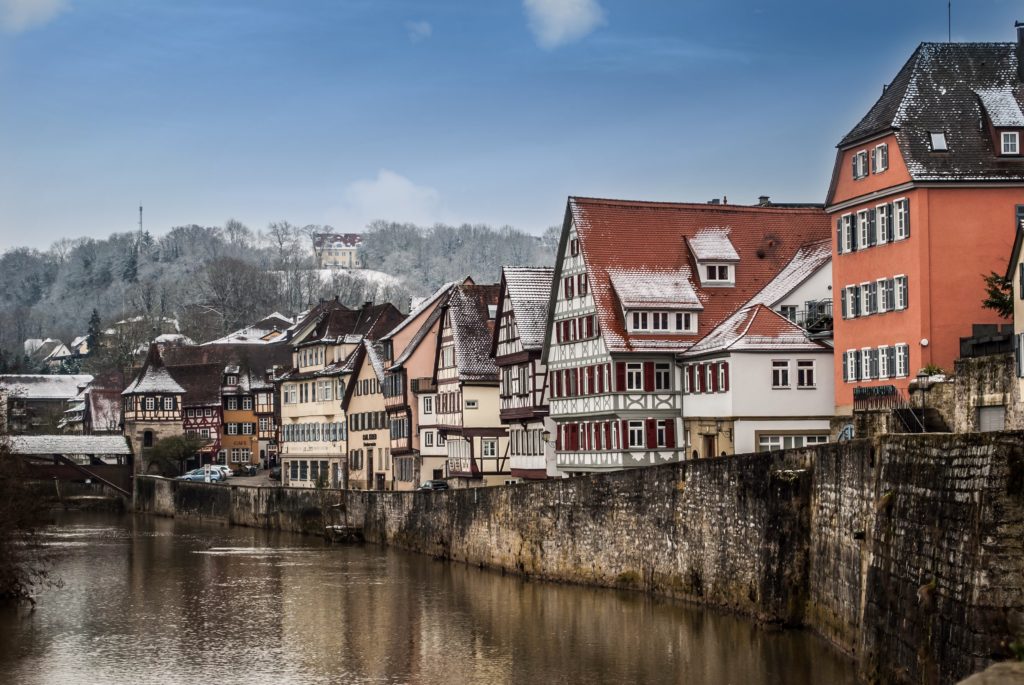
Schwäbisch Hall history
I had assumed that the town was named for a building, but in fact the ‘Hall’ refers to the West Germanic word for ‘drying something by heating it’ and by extension the saltworks that was the town’s min industry for hundreds of years. Possibly. To be fair, no one is exactly sure, and the town itself was just called ‘Hall’ for much of its history. The ‘Schwäbisch’ bit refers to Swabia, a linguistic and cultural region of Germany that includes much of this south west corner of the country – but isn’t actually a state or officially delineated on maps. It has its own German dialect and a very specific (and incredibly good, I should add) group of foods and dishes.
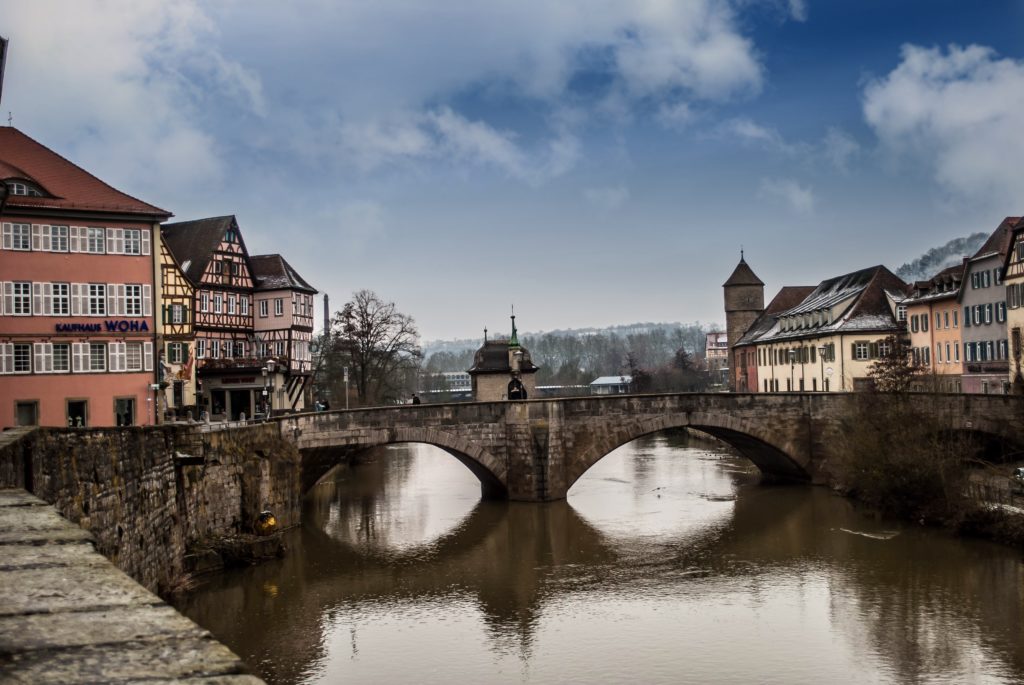
The town itself has been the site of salt production since the 5th century when the Celts started boiling off the water from the local saltwater spring, and the last saltworks shut down only in 1925. Before the advent of refrigeration, salt was an absolutely critical substance, allowing people to preserve and dry foods to last over the winter – think sauerkraut, sausages, bacon, pickles. Salt was also used to clean kitchen equipment and surfaces, preventing the spread of bacteria. You can see why a town like Hall would become very prosperous as the centre of salt production.
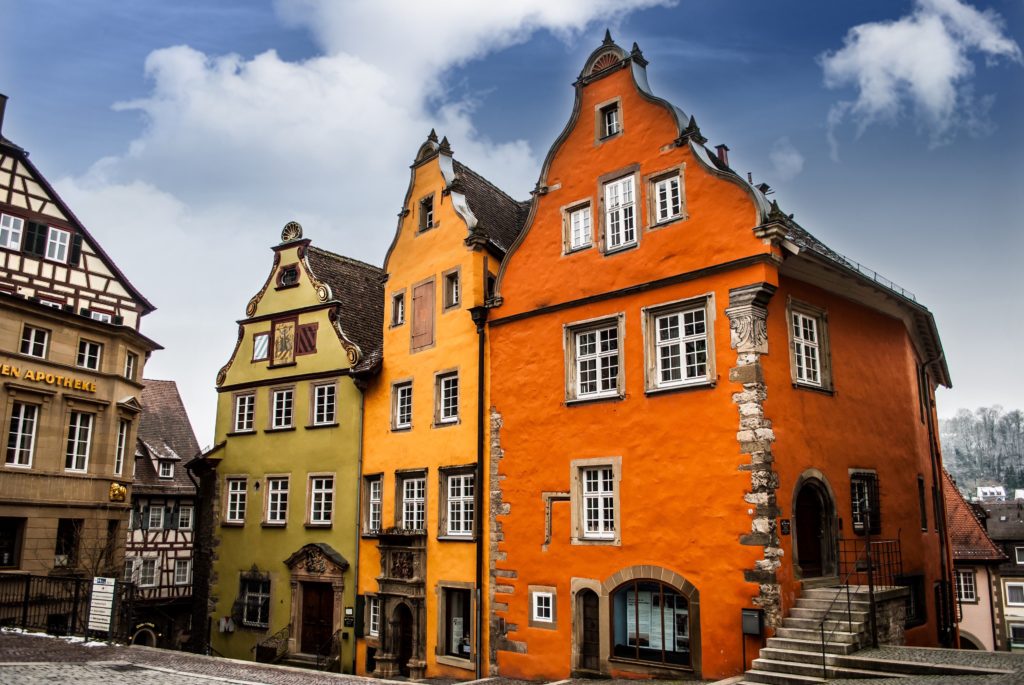
What to do in Schwäbisch Hall
This gorgeous town survived the Thirty Years War and the Second World War mostly intact when it comes to Fachwerk buildings. Just wandering through the old town is a good few hours activity. The town is set into a little valley around the river Kocher. The Marktplatz is up the hill a bit, and features these three colourful houses you can see in my photo above, as well as an impressive staircase leading up to the church of St Michael. These steps have quite a history of their own, as this is the site of a great outdoor theatre festival that has been running since the 1920s. In the summer you can catch the weekly farmers market here on Wednesday and Saturday mornings until midday, and during Advent the Christmas market is here as well. The South German Cheese Market takes place here at the beginning of May as well.
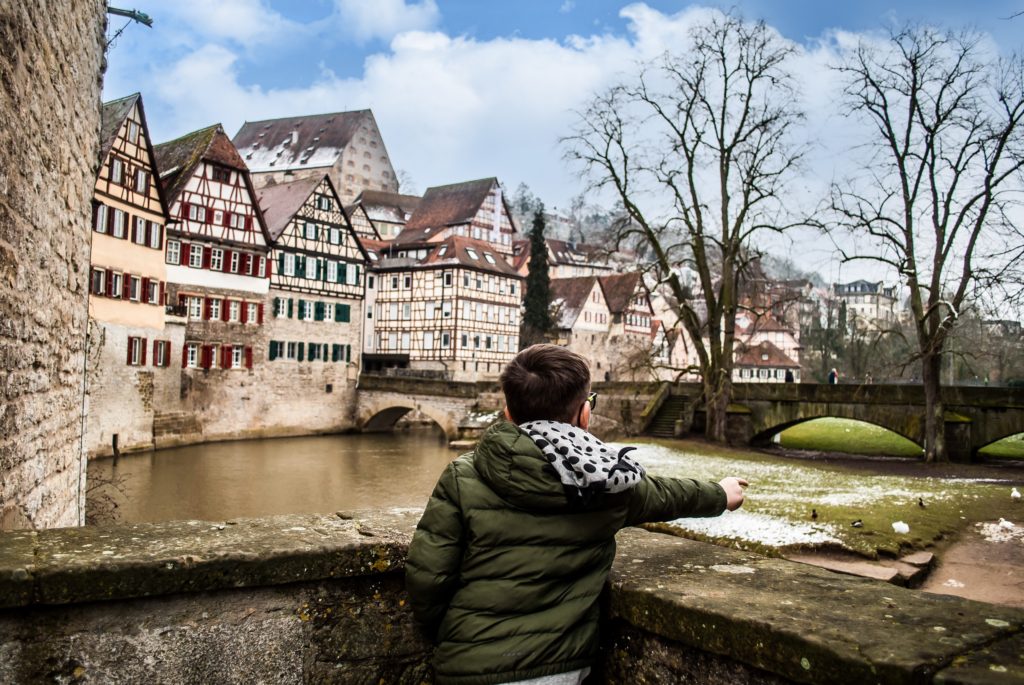
Wander down the winding streets towards the river, and you will find a couple of covered bridges, a park, playground, and the rebuilt Globe Theatre. Down along the river you will also find the Hallisch-Frankisches Museum. For free entry you can learn about the history of salt production, the open-air theatre, and marvel at the piles of historic artefacts from medieval torture chairs to remnants of Celtic stonework.
On the other side of the river and up the hill is the big art gallery, the Kunsthalle Würth, with a rotating exhibition schedule (check their website). This is no small town gallery – when we were there, they had works by Botticelli, Rembrandt and Rubens. There’s the Firefighting Museum (Haller Feuerwehr Museum), which we missed out on with our visit unfortunately! If you’ve got a small person into fire engines, this place will be a huge hit.
We also took a couple of hours in the Großcomburg Monastery on a hill above the town, and it’s so worth the short bus ride.
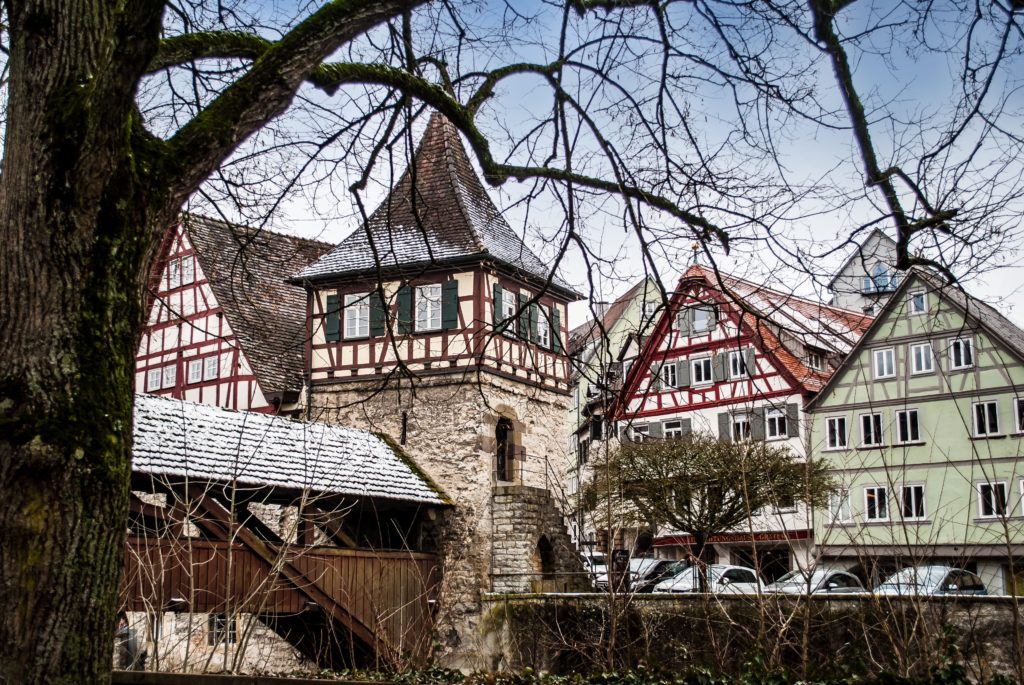
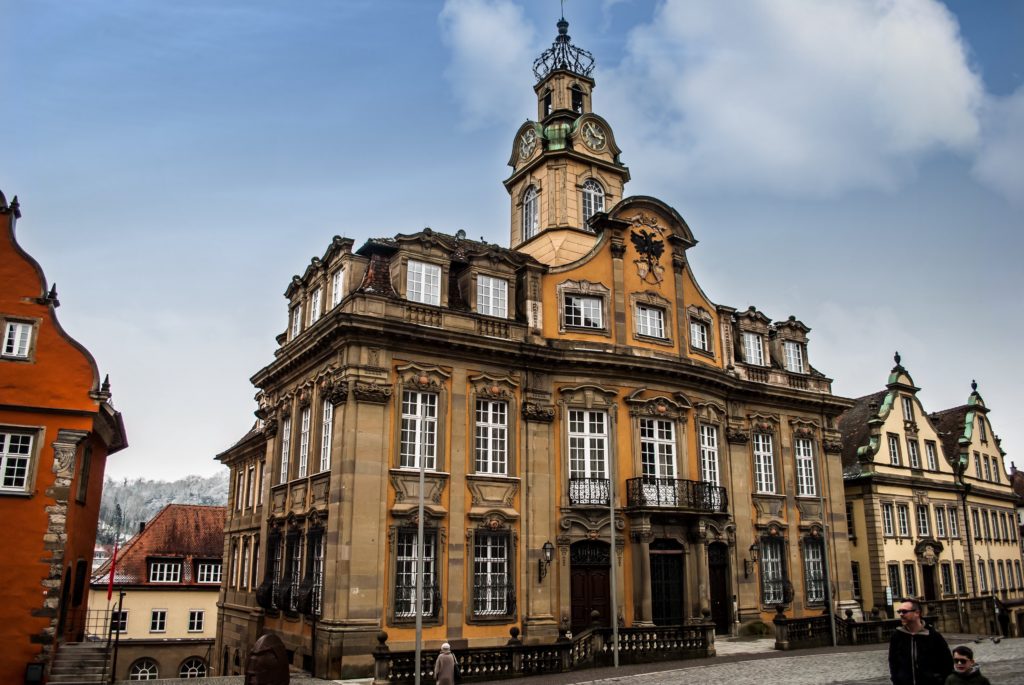
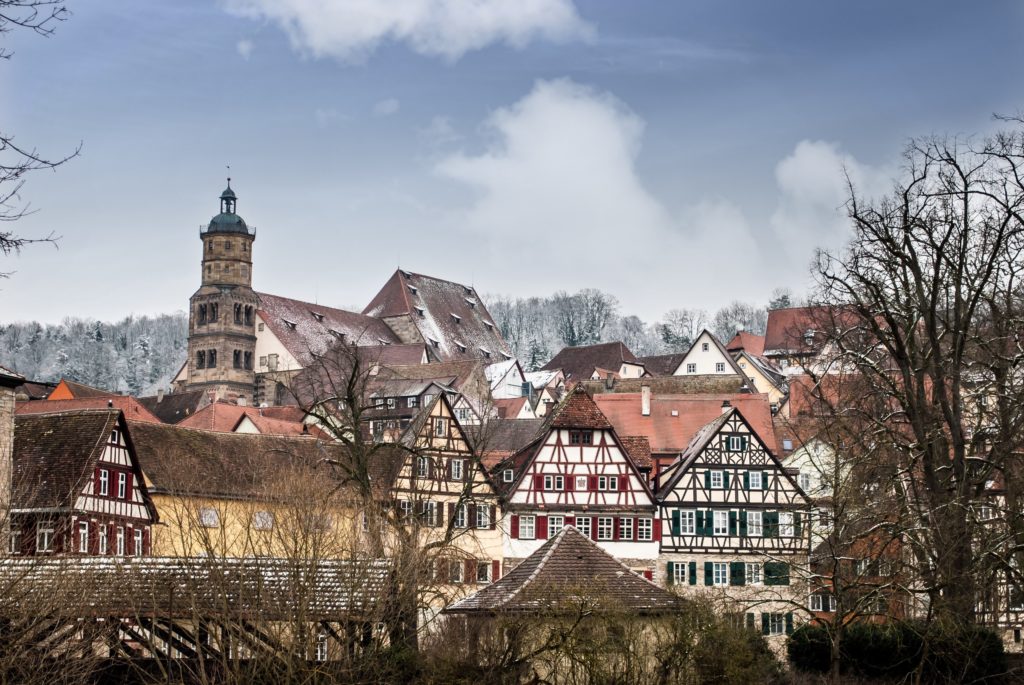
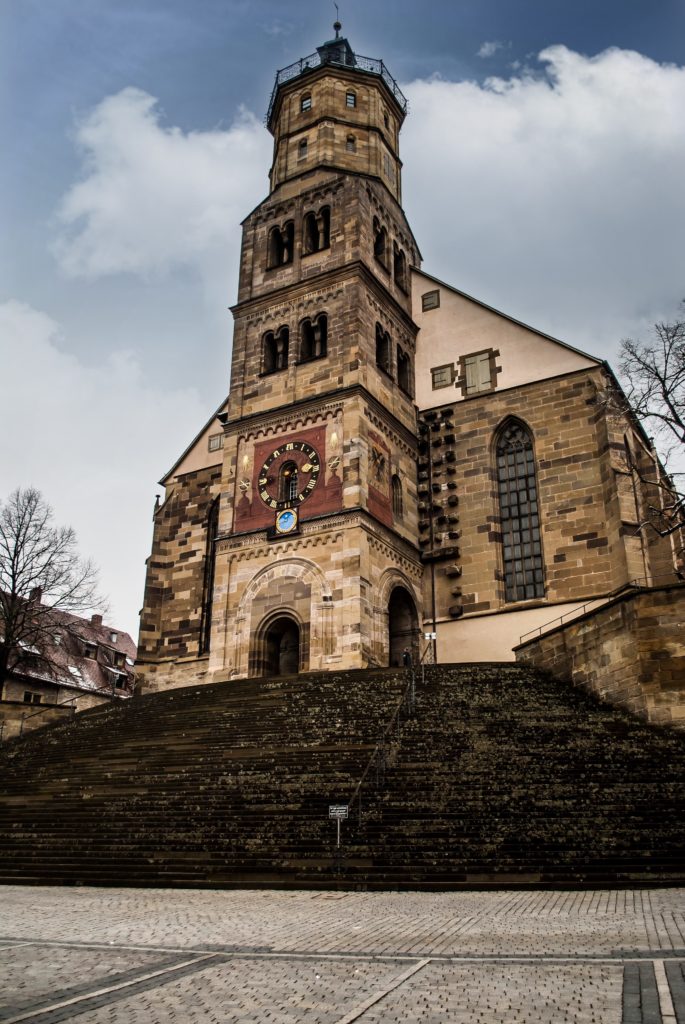
What to eat in Schwäbisch Hall
We didn’t have a chance to have a proper meal in town but living so close to Swabia, I can definitely share with you some excellent Swabian dishes you absolutely should try.
Maultaschen are a bit like big ravioli, but much denser. Traditionally filled with meat and cheese, these pasta pockets are called ‘God-cheaters’ in Swabian, referring to the story that the monks would eat them during Lent, hiding the meat from God by covering it in pasta dough. Now you can find Maultaschen of all varieties, from vegan to chicken. The classic way to have it is in broth with chives, but you may also see it served pan-fried. If you go into a grocery store in this region, you will find entire chiller cabinets filled with Maultaschen. They are definitely a favourite in our house.
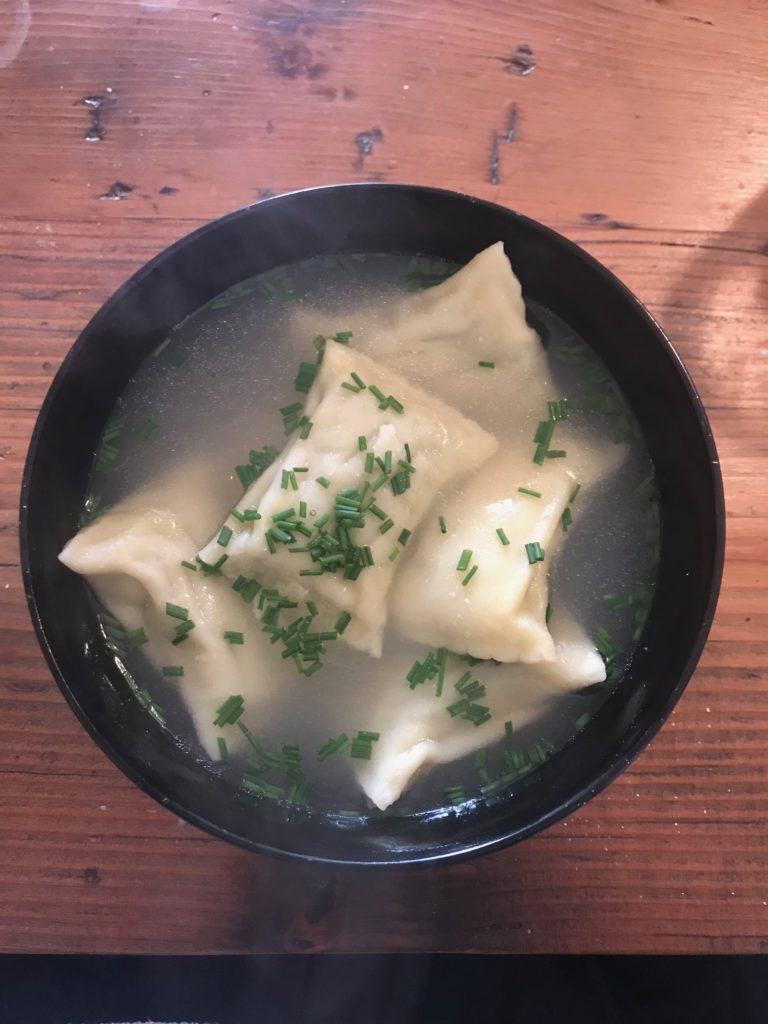
Käsespätzle is a glorious glorious thing. Spätzle are little egg noodles made fresh by rubbing the dough over a pot of boiling water. Käsespätzle involves taking those freshly cooked little noodles and layering them with mild cheeses and butter, then topping the whole melting mass with crispy fried onions. You can get this as a dish to itself, or as a side with something else.
Potato salad is a German specialty, of course, but the Swabian version is famous. Instead of a mayonnaise dressing, the Swabian potato salad involves vinegar and onions, it’s quite sharp tasting and a good foil to the richer dishes.
How to get to Schwäbisch Hall
By car, you can reach Schwäbisch Hall in about two and a half hours from Frankfurt or Munich. By train, it’s about three hours from either Munich or Frankfurt, involving a change or two of trains as Schwäbisch Hall is on a smaller branch line.
You can book your train right here, in English:
Hotels in Schwäbisch Hall
We didn’t stay overnight, but for a small town, Hall has a fair amount of cute little places to stay. It’s worth keeping mind that the Goethe Institut runs a popular German language programme here, so book your accommodation as early as you can.

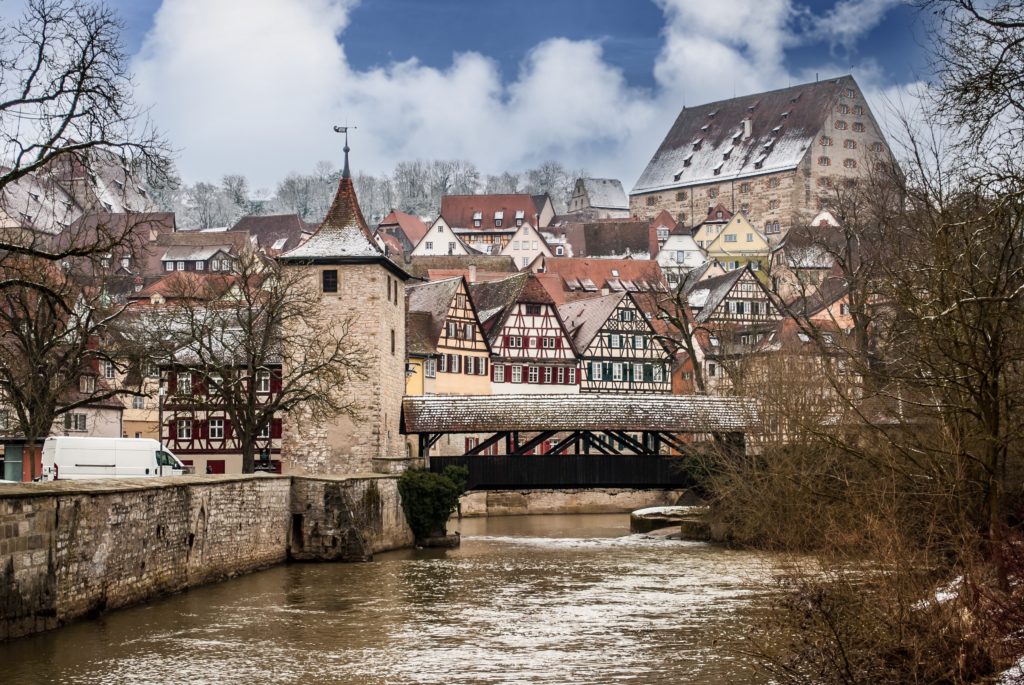


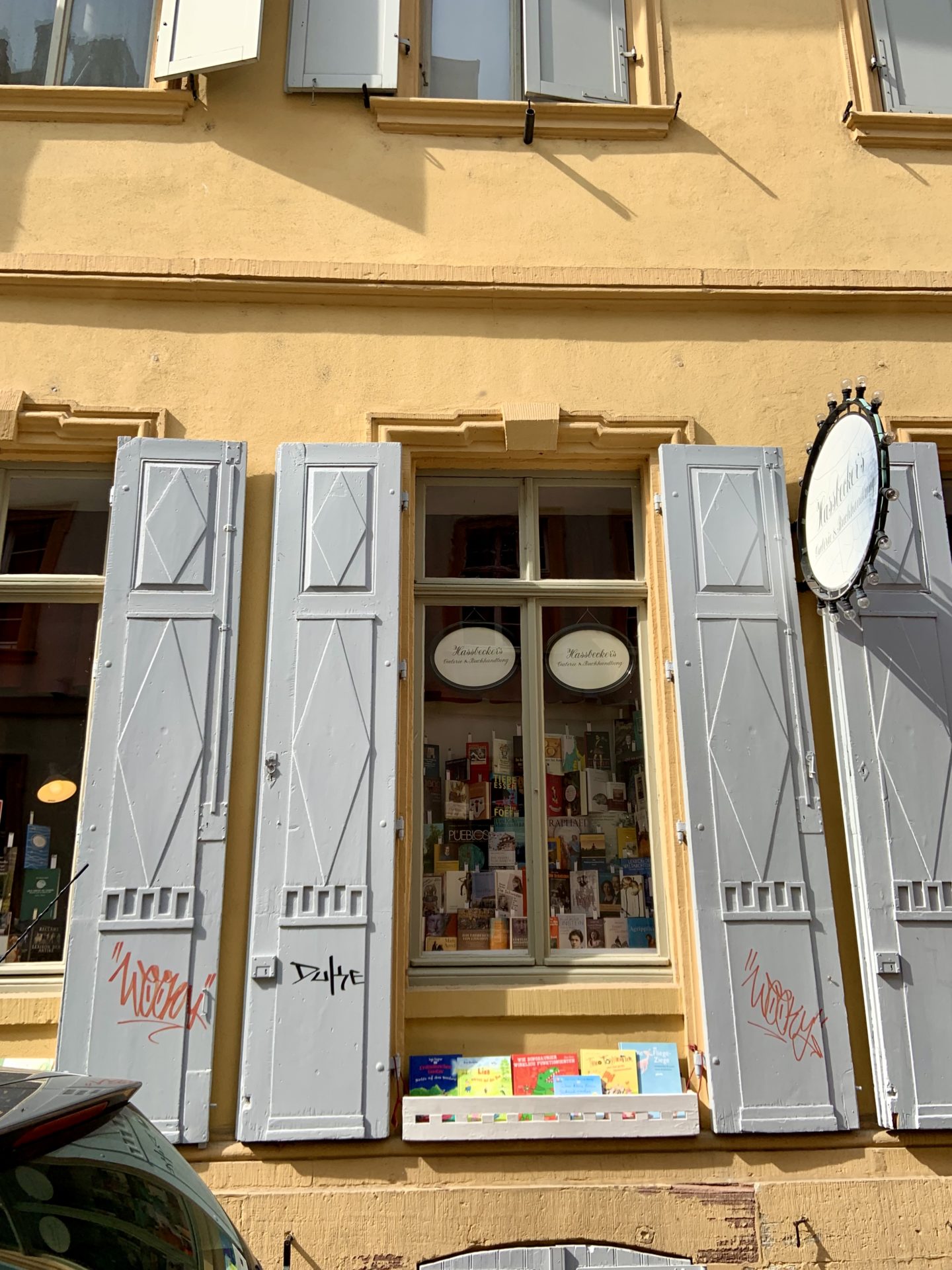
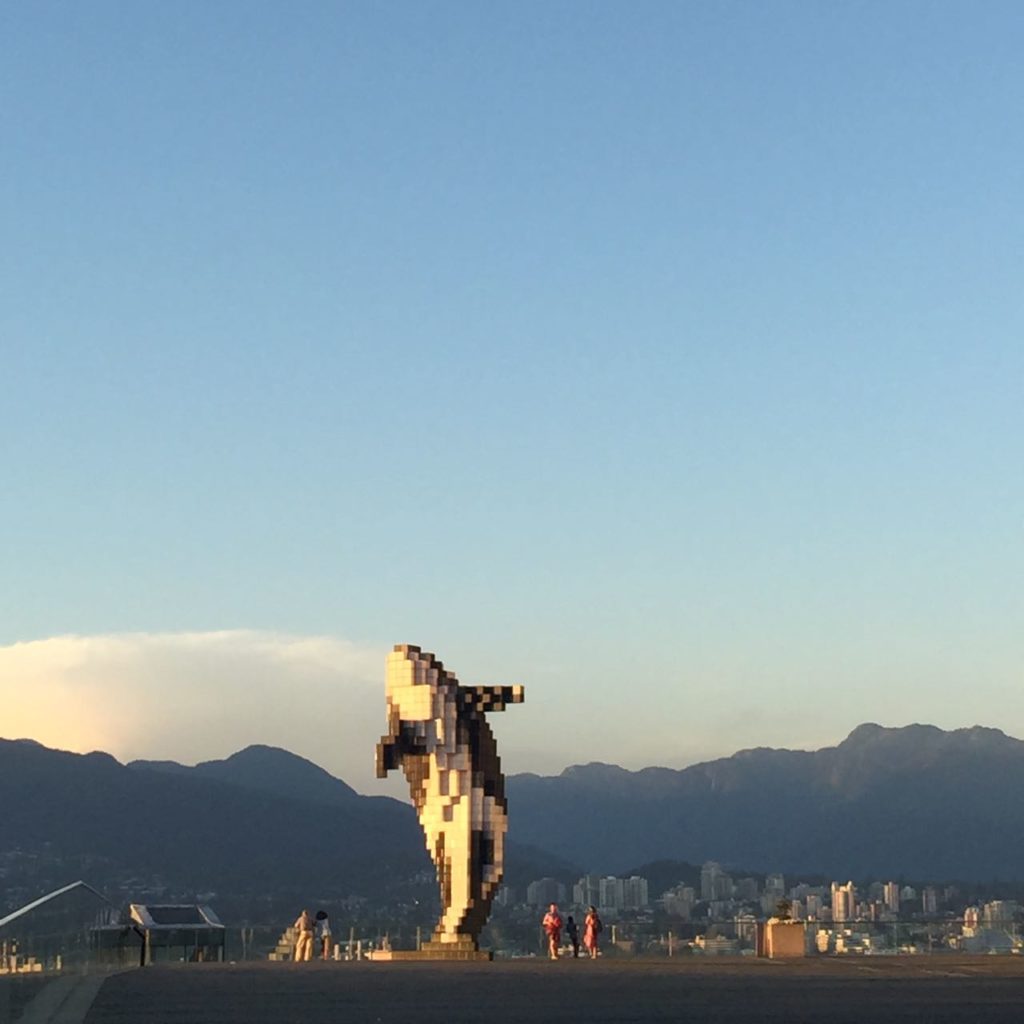
Wow, this place is gorgeous. (As are your photos). And did I just read the words, South German Cheese Market? See you there 😉
Haha yes you did! We should definitely go check it out.
Schwäbisch Hall is beautiful Erin. As are your stunning photos. What a delightful German winter interlude. Thanks for sharing on #farawayfiles
Thank you so much Katy!
I’m so thrilled to be introduced to a new exciting destination Erin. I will book mark it for future travel plans x
Oh terrific, glad to hear it!
I’ve only ever seena few pictures of Schwabish Hall and was never all that interested but I have a HARD CORE obsession with half-timbered towns that this just made the must-see list!! #FarawayFiles
Yes, if you’re into half-timbered towns, this one is a great! Much quieter than Rothenburg too.
Yes, I have seen photos of this town in Instagram so, I am glad I can see the bigger picture on this post (seems like Instagrammers take the same picture over and over again). I would love to live in Germany and visit a different town every weekend (or plan extended weekend trips). #FarawayFiles
It’s an excellent advantage to living down here, that’s for sure. Sometimes our Instagram-initiated adventures don’t amount to much, but this time it was wonderful. I really don’t know why this place isn’t as popular as some of the other tourist towns.
What a beautiful place! I love the half-timbered houses, and would love to try Maultaschen. I’ve never heard of them before, but they sound delicious!
Poor German cuisine gets this bad rap for being all pork knuckle and sauerkraut, which is too bad because there is so much more. Maultaschen are terrific and to be honest, I hadn’t gotten around to trying them until a few months ago, now I’m kicking myself for missing out on a year of awesome easy meals! They are much more common down here in the south. Don’t miss the Käsespätzle too, it is just heavenly.
How delicious does Käsespätzle sound?? I want some right now! The town looks like a great find. How nice to be able to just happen upon half-timbered towns like these. I bet there are plenty more that you’re yet to visit? Thanks for sharing with #CulturedKids!
This is true, there are so many! We often pass through one and I mark it down for a further visit later. We could be at it forever. But this one was one of our more interesting finds, for sure. And käsespätzle is only ever a good thing. 😉
Half timbered towns and cheese noodles, now I know why I love Germany! What a beautiful town, definitely one to add to the list. Thank you for linking up to #CulturedKids
This place is SERIOUSLY photogenic!! What a great find! Added to my bucket list <3
So beautiful! Especially with all the snow. The covered bridges look like a real gem, and remind me of Switzerland. Absolutely adding this town to list of places I’d like to roadtrip to in Germany.
I have never heard of this town before, but now I feel an overwhelming desire to visit. What a truly beautiful place. The frost on the roofs only adds to the appeal. I am not a huge fan of how winter makes me feel, but I sure do love how it looks in photos. You captured some beautiful ones here! 🙂
This looks so cute!! My list of German fairytale towns is becoming neverending haha. Thanks for sharing another gem! 🙂
Those half timbered houses are beautiful. Lovely photos, I think the scenes by the riverside are just charming. #Farawayfiles
Intelligent, well-researched, beautiful photographs and written with clarity. Moreover, you really made me want to go there. What a brilliant blog post – I loved it!!
Käsespätzle is a firm favourite in our household too, but I just can’t convince the family on the merits of Maultaschen. It looks like we’ll have to visit Swabia (it’s not too far away).
Greetings from Luxembourg. #CulturedKids
Thank you so much! I really appreciate it. Keep working on the maultaschen front, it’s worth it if only because it’s so easy! I’ve heard of a maultaschen-making workshop somewhere down here in southern Germany, maybe worth checking out if you head down this way! I’d like to do it too, if so I will of course write about it!
Schwäbisch Hall looks beautiful Erin. Gorgeous photos! You made me want to visit this place. 🙂 #FarawayFiles
I’d love to explore more of Germany, Schwäbisch Hall looks wonderful. (Your photos are beautiful). #farawayfiles
The architecture is so beautiful – stunning photos! #CulturedKids
Thank you!